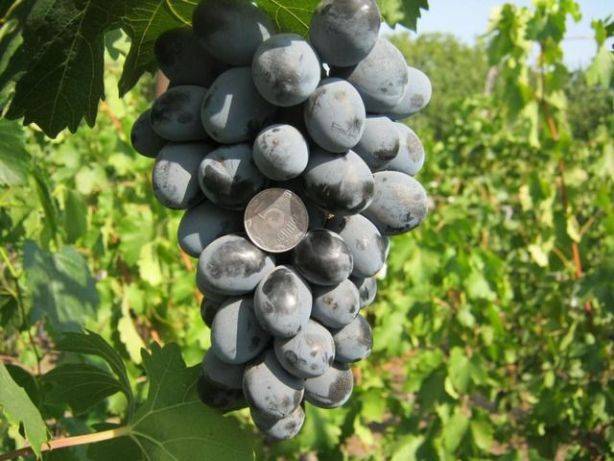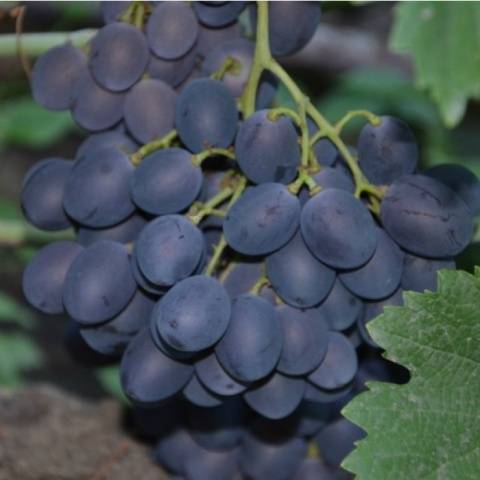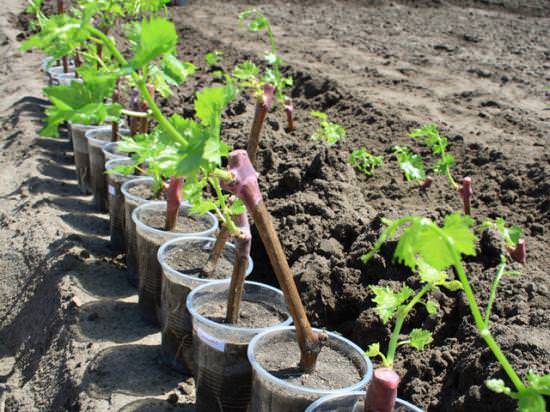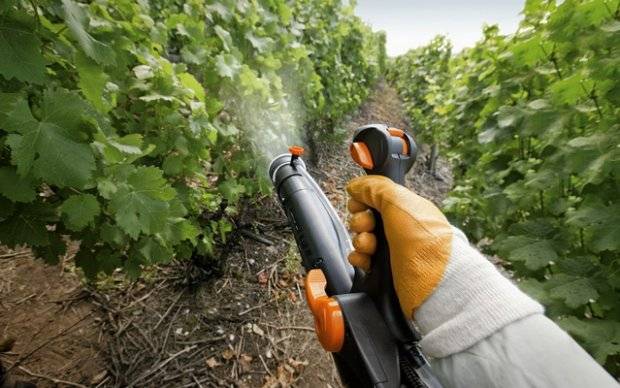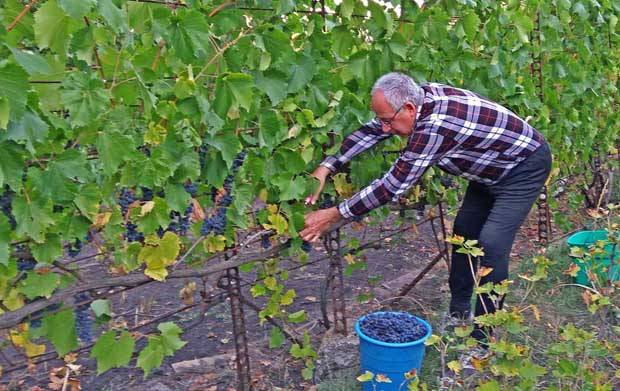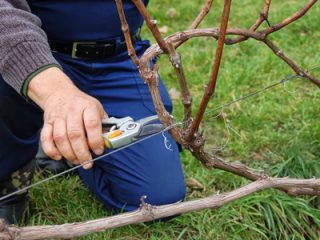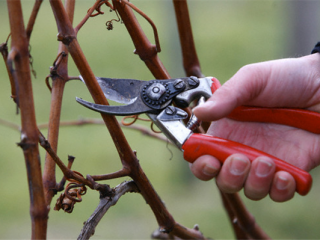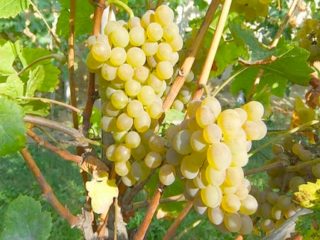Content
The Furshetny grape is a new hybrid form of grapevine, bred by the Zaporozhye amateur breeder V.V. Zagorulko. Vitaly Vladimirovich chose the well-known varieties Kuban and Gift to Zaporozhye. His work on developing a new variety was completed in 2008. The resulting grapes, having absorbed all the best parental qualities, showed themselves to be a very promising variety for home cultivation.
Description
In terms of ripening time, Furshetny belongs to the early or mid-early varieties of the crop. Its berries, depending on the climate of the area and the weather in the season, ripen 110-130 days from the beginning of flowering, that is, approximately by mid-August.
Description of the Furshetny grape variety and its photo:
- bush is vigorous, powerful;
- shoot formation is excellent (on average, for each square meter of area occupied by Furshetny bushes, there are about 14-15 shoots);
- by the end of the growing season, all shoots ripen;
- the leaf is wide, figured, bright green;
- flowers are bisexual;
- the clusters are quite large, have a medium-dense structure and a cylindrical-conical shape;
- their weight reaches 0.6-0.8 kg;
- berries are oval, ripe - dark blue, weighing 12-16 g;
- the skin is dense, with a thin waxy coating, eatable;
- the pulp is sweet, filled with juice, fleshy;
- the taste is harmonious, with a slightly noticeable aftertaste of raisins or mulberries;
- The aroma is pleasant and pronounced.
Harvested grapes tolerate transportation well and are stored for quite a long time, which, combined with their early ripeness, allows them to be grown not only for personal use, but also for sale. The advantages of the Furshetny grape, according to its description, include:
- good ripening of shoots;
- frost resistance up to - 22˚С;
- resistance to gray rot, oidium and mildew (3 points);
- resistance to cracking of berries due to excessive moisture, to susceptibility to wasps;
- uniformity of berries (no peas are observed);
- overall high yield of the bush.
Choosing a place, seedling and planting it
In order to properly grow Furshetny grapes and be able to always get a bountiful harvest, you need to choose the optimal place for them on the site, where they can show their full potential. For example, lighting is very important for the normal accumulation of sugars in berries, therefore grapes need to be planted in an open and sunny place, where he will not lack warmth, air and light.
The soil for this crop should be loamy or sandy loam, clays and sands must first be improved - in the first case, add sand to them, in the second - clay soil.
Another quality that the soil must have to ensure the successful development of grapes is that it must be loose and breathable.In such soil, plant roots do not lack oxygen, moisture and nutrients.
Furshetny seedlings can be planted both in spring and autumn. In the case of autumn planting, it must be started before the onset of cold weather, so that the bush has time to adapt and prepare for winter. Before the cold weather, it must be covered, despite the fact that the Furshetny variety is not covering.
If the spring planting method is chosen, then it is carried out when it is finally warmer, but the heat has not yet set in and the sun has not dried out the soil. At the same time, there is no need to delay planting, as this will negatively affect the survival rate of the seedling and it will grow poorly.
Fourchette grape seedlings suitable for planting must be well developed, with woody shoots and a strong root system. The bark should be intact, without cracks or stains, the branches should be flexible and healthy in appearance.
The area for grapes is prepared in advance. It is cleared of weed, dig up and level the ground. The planting process itself occurs in the following sequence:
- Pits or trenches are placed in such a way that the distance from one seedling to another is 3 m in both length and width. The depth of the pits must be at least 0.8 m.
- Drainage in the form of broken bricks, slate or stones is poured into the bottom of the prepared recesses.
- It is covered with a mixture of good soil, sand, humus and ash on top. You can use combined mineral fertilizers instead of organic matter.
- A seedling is placed in the center of the pits, watered and when the water is absorbed, sprinkled with earth.
- The soil is mulched with hay or straw.
Supports are installed in the row and wire is pulled between them so that the vine can be tied to them.
Care
Caring for newly planted Furchette grapes involves mandatory irrigation, especially in dry years. Young bushes are watered frequently in the first year after planting - this is necessary for successful rooting. After each watering, loosen the soil if it is not covered with mulch. Remove all weeds that appear around the plants. Young grape bushes are fed starting from 3 years of age. In the second season it begins to bloom. In order not to burden the growing bush, only 1 bunch is left on it.
Caring for mature bushes of Furshetny grapes is more complicated. The complex of agrotechnical measures includes watering, loosening, fertilizing, pruning and harvesting. Water the bushes several times during the growing season:
- in spring, if there is not enough moisture in the soil;
- before flowering begins;
- after him;
- before the berries begin to ripen;
- in the fall after leaf fall, if the autumn is dry.
It is better to water the bushes not at the root, but to dig grooves near them and pour water into them. This way it will be more evenly distributed over the area occupied by the grape roots.
Furshetny grapes are fed with organic matter and mineral fertilizers. You can use manure (for winter application), humus (for spring application), and ash. Organic matter makes the soil more structured, creating conditions for the development of beneficial microorganisms in it, converting elements from mineral fertilizers into forms more accessible to plants. From mineral fertilizers, you can use both simple fertilizers (saltpeter, potassium salt, superphosphate) and complex and complex fertilizers (nitroammophosphate, Mortar, Florovit, Kemiru, etc.). Fertilizing is combined with watering, after which the ground is loosened.
In addition to standard fertilizing, you can also use foliar fertilizing with complex fertilizers with microelements or ash solution. For better adhesion, you can add a little sugar to the liquid.
There is no need to spray during the day, as droplets of the solution remain on the leaves and the plants can get burned. Foliar feeding will help the bushes develop better during the growing season and be well prepared for the coming winter.
Furshetny grape bushes are formed annually, starting from the second year. Pruning is carried out in the spring before sap flow to avoid the “crying” of the vine or in the fall after leaf fall, when the vine is fully mature. The shoots are cut to 5-8 eyes, 25-30 branches are left on the bush. The cuts are made obliquely with a slope on the side of the shoots opposite to the eyes. Cut pieces of shoots can be used for propagation. To do this, they are lowered into the cellar and stored there until spring.
Also, on adult bushes, they clean the old bark, carefully peeling it off so as not to damage the wood underneath, and also cut off the roots that form near the trunk. How to form a bush of Furshetny grapes can be seen in this photo.
Furchette is resistant to fungal diseases, but nevertheless, to prevent infection, it is necessary to spray with fungicides and inspect the leaves and berries in order to notice the onset of the disease in time. The same applies to pests that can affect grapes. These are leafhoppers, leaf rollers, thrips and felt mites. They are destroyed with insecticidal preparations.
Harvesting begins in mid-August. At this time, the berries reach the size characteristic of the variety, are painted in a typical color and acquire a bright taste. The bunches are cut with pruning shears, placed in light containers and transported to the storage location.
There is no need to cover adult Furshetny bushes in regions with moderate winters; it is quite frost-resistant. But where there are severe frosts in winter, you cannot do without shelter. They remove it in the spring, before the sap begins to flow, and again tie the shoots to the support.
Review and video
Furshetny grapes are popular among gardeners, so they leave their reviews about it.
In this video you can see the Furshetny grape variety.
Conclusion
Furshetny grapes are one of many varieties of crops obtained by folk breeders. It does not require special care, is not problematic, but is always productive. If you grow it in compliance with the rules of agricultural technology, a harvest of delicious blue berries is guaranteed.
